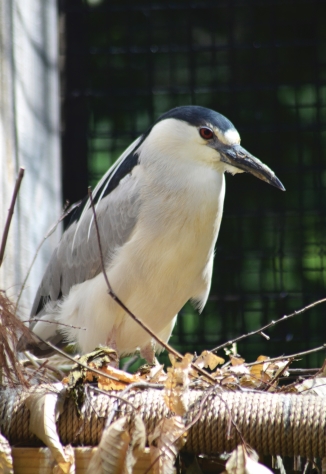Red Fox
Vulpes vulpes
| Kingdom | Animalia |
|---|---|
| Phylum | Chordata |
| Class | Mammalia |
| Order | Carnivora |
| Family | Canidae |
| Genus | Vulpes |
| Species | V. vulpes |
| Lifespan | 3-7 years |
| Size | 38-42 inches long, 14-16 inches at shoulder, weight 8-12 pounds |
| Offspring | 4 to 5 kits |
| Speed | up to 33 mph |
| Status | Common |

About Red Foxes
How can you recognize a red fox?
Foxes are members of the dog family (Canidae) but are small and lean and are the only wild North American canids with a white-tipped tail. Soft, dense fur is various shades of red while the chin, neck, chest and belly are white. Legs and back of ears are black. Winter fur is thick and their bushy, cylindrical tails keep their faces and feet warm when they curl up to sleep on winter snow.
Where are red foxes found?
Red foxes are the widest ranging carnivore in the world occurring in North America, Asia, Europe and North Africa and have been introduced to Australia. They are in all states except Hawaii and live throughout Canada. The forest-field ecotone is an ideal place to spot foxes – this is the transition zone between these two natural communities and this “edge” holds many of the small mammals that foxes eat. Foxes have a home range of one to five square miles which includes forests, fields, brushy land and swamps.
Red foxes are opportunists. What does that mean?
As opportunists, foxes eat what is available – rodents such as mice, voles, chipmunks, woodchuck, as well as insects, frogs, earthworms, carrion, nuts, grains, wild fruits and berries such as blackberries, wild grapes and apples. Surplus food is cached for later by digging a hole and covering the remains with dirt and grass.
How does a red fox hunt?
Red foxes are very inquisitive and often use their senses of smell and hearing to locate prey. Foxes can hear the sound of a mouse rustling in the grass 150-300 feet away. Stalking may be followed by a leap into the air as the fox pounces on the prey and pins it to the ground with its front paws. Hearing of red foxes is best for low frequency sounds made by animals rustling in leaves or gnawing. Sense of sight is also good, especially in detecting movement.
How do red foxes raise their young?
Breeding season for red foxes is mid-January to late February. With a gestation period of 51-56 days, foxes give birth in late March through April. Male foxes bring food to the den for the first week while the female cares for the kits. At three months the young begin learning to hunt with the adults and are independent by fall.
Fun Facts!
- Foxes communicate their home range to other foxes by marking with urine that has a distinct skunk like odors. Even humans can detect this smell! They also leave scat in obvious places.
- Fox sounds include yaps or barks, long howls, and screeches.























